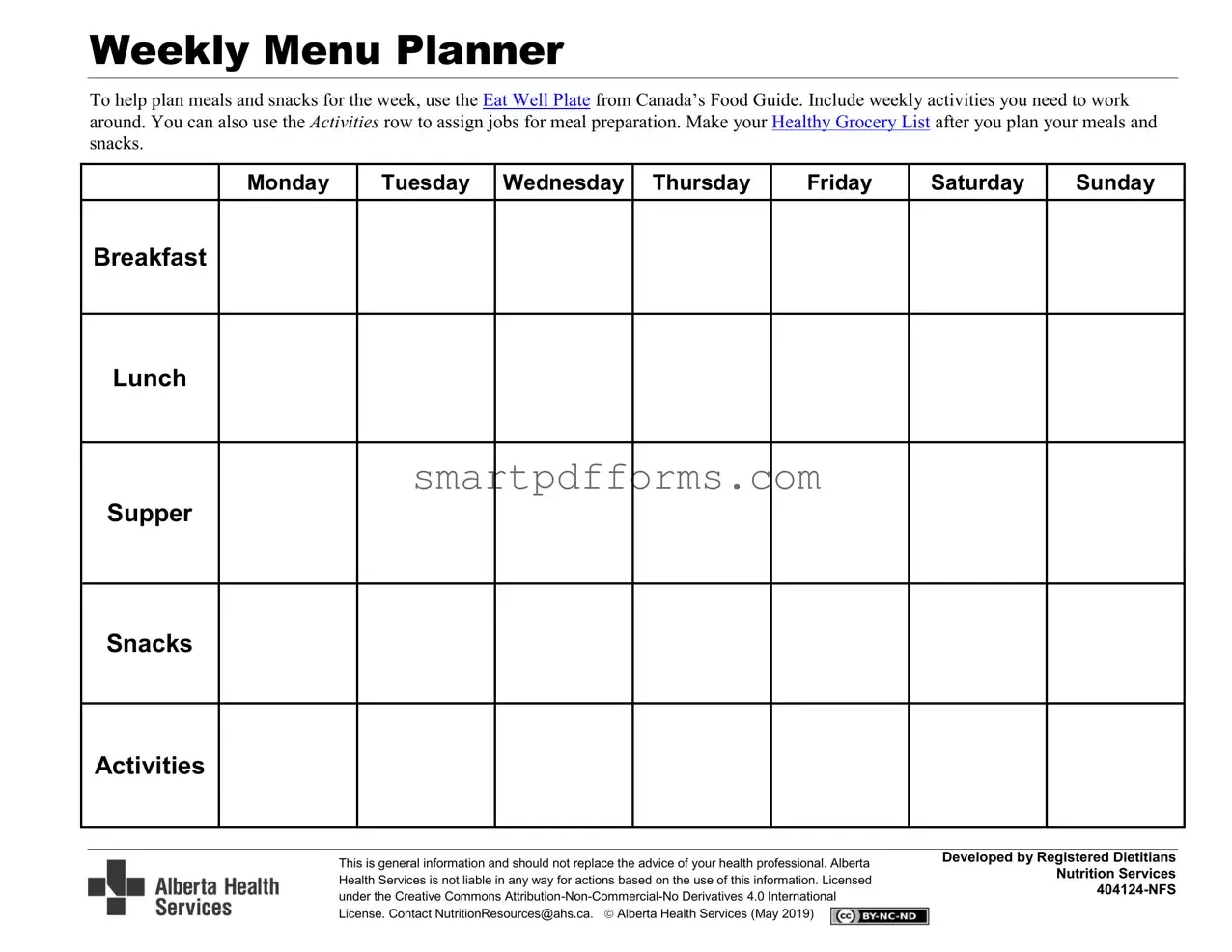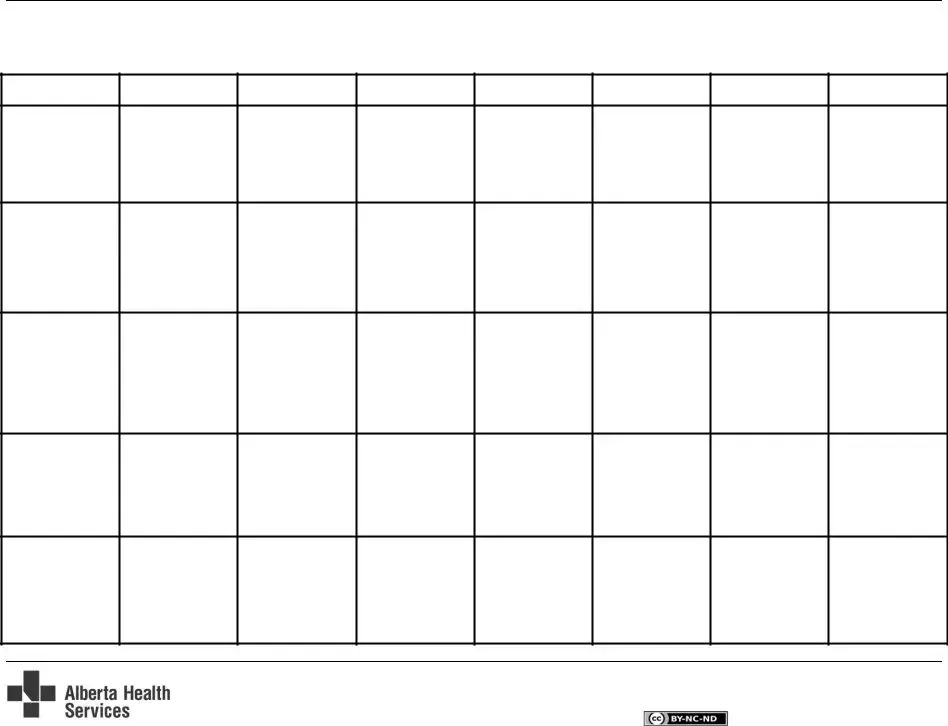Blank Menu PDF Template
The Menu form serves as a helpful tool for planning meals and snacks throughout the week, guided by the Eat Well Plate from Canada’s Food Guide. It incorporates space for weekly activities that could affect meal preparation and allows for the assignment of meal preparation tasks. After planning with the menu form, individuals can effortlessly create a Healthy Grocery List to streamline their shopping process. This functionality emphasizes the importance of thoughtful meal planning in maintaining a balanced diet. Note: This form should complement, not replace, advice from health professionals and is provided with a license from Alberta Health Services under the Creative Commons Attribution-Non-Commercial-No Derivatives 4.0 International License.
Ready to organize your weekly meals? Click the button below to start filling out your Menu form.

